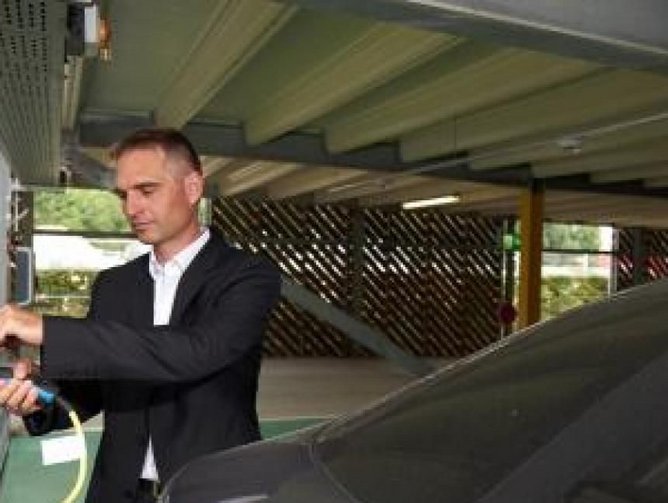SAP drives the experience economy through transformational strategic acquisition and intelligent digital transformation on a global scale
SAP is the defining enterprise software company of our time. Industry leaders in almost every sector, private and public, were getting to grips with the concept of enterprise resource planning (ERP) back in the 1990s when, in the face of determined competition, SAP succeeded in adapting to the rapid evolution that was taking place at the turn of the century. Not only did it expand its platform to embrace additional functionality, but it started to prepare itself for the exodus from on-premise enterprise software to the as-a-service model that resides in the cloud today. SAP’s is the fastest growing business cloud by a wide margin.
At its inception, the company had a strategy of having regional resellers but today it is reaping the benefits of having decided very early on that it was going to be a global company. It entered China in the early 1990s and now China is its fastest growing market in defiance of any gloom around its slowing growth. “We are not having challenges in China — we are doubling down in China," declared SAP’s CEO Bill McDermott as recently as January 29th.
Arlen Shenkman’s association with SAP spans 15 years and in that time, he has helped evolve the company’s global growth strategy in a number of important ways. Trained in corporate law and corporate finance he brought with him broad experience with large international firms, much of it to do with mergers and acquisitions (M&A). In 2005, he was invited by SAP’s then CFO Werner Brandt to build out an M&A practise for the company. Before then, though it had made a number of smaller acquisitions, SAP’s growth had been largely organic and by strategic partnerships with technology companies, notably IBM.
Transformative acquisition at scale
Brandt however recognized that to meet the challenges of the market and the limitless potential presented by data it would be necessary to place M&A activity at the center of future development. “Our objective was to do transformative acquisitions. We really started down that road in 2007 with the acquisition of BusinessObjects in the analytics space, and that expanded our addressable markets considerably.” The $6.78bn acquisition of BusinessObjects was a watershed moment for the company both on account of the major financial commitment and because it brought business intelligence tools to SAP’s back office transactional systems.
By 2010, SAP was ready to make its next transformational jump with the $5.8bn acquisition of Sybase, which gave SAP users the option of running their operations from mobile devices, paving the way for real-time analytics and removing barriers between business applications and business intelligence, says Shenkman. “We then went on with a series of acquisitions to expand our cloud capabilities, ranging from SuccessFactors to Ariba and Fieldglass and the travel and expense management services company Concur.”
The $8.3bn Concur deal in 2014 coincided with the launch of the latest version of the S/4 HANA business suite. As Bill McDermott observed at the time: “With Ariba, Fieldglass and Concur, SAP is the undisputed business network company. We are redefining how businesses conduct commerce across goods and services, contingent workforces, travel and entertainment. With the SAP HANA platform, the possibilities to innovate new business models around Concur and the network are limitless.”
Following the successful completion of this phase of strategic M&A activity Shenkman served for two years as CFO of SAP in its largest market, the USA, before being invited by the CEO to work directly with him in the newly created role of Executive Vice President, Global Business Development and Ecosystems in May, 2017. His job, he explains, is to help the company get to grips with the opportunities it has to grow externally. “We tend to define that as inorganic growth: oftentimes that can be a new strategic partnership or an acquisition or a strategic investment, but in essence our charter is really to help the company put its arms around strategic initiatives with global partners. We’re looking for initiatives that enable us to expand our portfolio and continue to help our customers and our ecosystem with the digital transformation that most of them are going through.”
The intelligent enterprise
The word ecosystem in Shenkman’s job title reflects the realities facing business today. A holistic view of organizational activity as an organism or a living entity influenced by the activity and changes in every place, internal or external, that touches it, is made possible by the convergence and management of data in the cloud. We can see here the beginnings of what SAP today describes as the intelligent enterprise. In this new world the notion of categories is perhaps invidious, but that said, the most recent SAP acquisition ($8bn) of Qualtrics has outlined a new category, that of experience management (XM). The experience economy is a reality – 80% of customers have chosen to switch brand because of a negative experience and the impact of yearly loss of trust due to abuse of data privacy and brand loyalty is put at a staggering $2.5tn, and the estimated market size for customer experience solutions, platform and integration to operational systems stands at $100bn.
Qualtrics is a technology platform that organizations use to collect, manage and act on experience data. Experience management may be described as a system whereby teams, departments and organizations can manage the four core ‘experiences’ of business: customer, product, employee and brand. “One of the things that really excited us when we were considering this acquisition,” says Shenkman, “was the idea of creating a category around experience management. This is often narrowly defined as a customer’s, an employee’s, or a product user’s experience. But Qualtrics is truly a horizontal platform that allows you to get feedback and information around the holistic experience from all of these. This gets really interesting when you bring it together with our product portfolio, which links together that operational data with experiential data. How is it possible to have an intelligent enterprise without understanding how your customers, employees, product users, and everyone exposed to your brand, feel about you?” It is hard to have a holistic view without really understanding what is happening to the business from an external perspective, and why that is happening.”
Simply put, Qualtrics brings together the mass of experiential data trawled from whatever source – customer, brand, employee or the product itself. Rather than crunching these numbers in the back office and subjecting them to traditional feedback and survey processes, it gives companies the ability to adjust policy based on this data in real time – addressing issues like competitiveness drops, employee turnover or customer churn before they have time to develop into a problem. The integration of this ability with SAP’s ecosystem eliminates the old distinction between front office and back office. ‘Intelligent enterprise’ ceases to be a mere buzzword once the business is viewed organically, rather like the human body or a natural ecosystem in which latency can mean the difference between extinction and survival.
Data in the ecosystem
Data, of itself, is dumb, says Arlen Shenkman. “There has long been a debate in large companies and among enterprise software specialists about the intrinsic value of data. My personal perspective is that data only has value when it helps you make better decisions and makes employees, customers and product users have a better experience with you. That can’t happen unless you know what they think about you.”
For 50 years SAP has been focused on customer success driven by the quality of its products: that remains the focus, but today it’s no longer enough. There’s no doubt that the acquisitions of the past ten years have deepened and broadened SAP’s reach. Innovation can’t happen in isolation, he insists. “Without doubt M&A has driven a very robust portfolio of products, each of which enhances our focus on the success of our customers – and that, we believe, is the key to our own success as a global organization.”
So, it’s probably not quite the thing to regard the Qualtrics acquisition as a complete reinvention of the company. SAP always had this focus, based on customer service delivered through its global presence and the global presence of the 18,000 partners that implement, build and innovate on its platforms. “This is where the complexity of our ecosystem comes in. We have very large global partners like Accenture, Capgemini, Deloitte, EY, and PWC. We work closely with the major public cloud providers, and hardware and software partners, and we have many smaller regional suppliers from around the world. The core of the SAP ecosystem is a very strong set of companies around the globe that develop software that resides and integrates with an SAP platform, whether on-premise or a cloud solution like SuccessFactors, Fieldglass, Ariba or Concur. Over the years, SAP has carefully cultivated our ecosystem. Every partner contributes certain expertise that allows us to deliver a more intelligent enterprise.”
The landscape surveyed
There’s no doubt though that Qualtrics is a bit of a game changer for SAP, and one that will take a while to settle in. It is impossible to say never again, but the man with the overview of the ecosystem is able to claim a degree of satisfaction with its current state. “We love the Qualtrics acquisition and we are really excited about building a category around XM, however I am not aware of any hole in our portfolio that would represent a strategic gap for us,” he says. “When we look over the landscape today, what our development teams have built and the cloud assets that we've amassed over the past eight years, we're very comfortable with that portfolio.” So, no more large scale acquisitions are currently in his sights.
The breadth of the SAP portfolio is legendary of course with capabilities spanning ERP, procurement, CRM, HR, MRP and so on you’d be hard put to identify any weakness. There will doubtless continue to be smaller acquisitions as the potential of technologies like AI and IoT are realized, but from here on in, SAP can concentrate on its core mission. “The journey for so many of our customers is digital transformation. SAP is helping them all the way, from finding the right place for them to start to deploy some solutions to implementing them. Some of the companies we work with are already through that journey; others are not. With 425,000 customers in 180 countries it’s not surprising they are on different timetables!”
The acquisition program since 2010 has hugely expanded what he calls SAP’s addressable markets. “We have crafted a strategy to ensure our customers go through their digital transformation and move to the cloud successfully, deploying SAP technology to become the best businesses they can be.”






